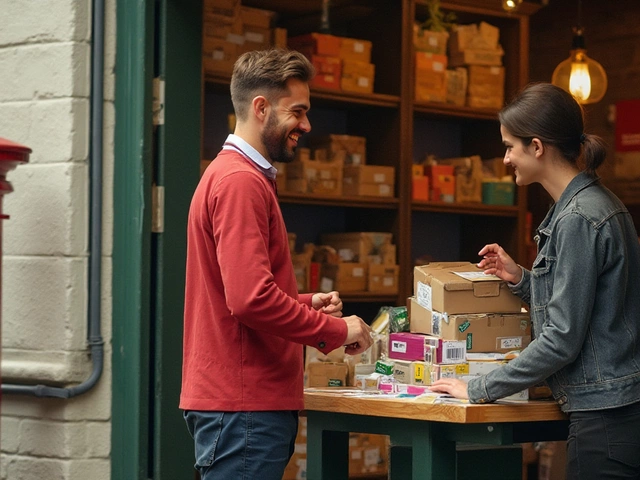If you run an online store, you know the shipping partner you pick isn’t just a small detail. It’s the moment your customer judges your business in the real world—right at their doorstep. Amazon made two-day shipping a standard, but if your packages show up late or mangled, trust me, your dream of return customers can vanish in a tracking-code second. It turns out, a whopping 88% of shoppers say their post-purchase experience (that’s shipping and delivery) is as important as your product. If your box surprises them with slow delivery, high shipping fees, or a cardboard disaster, they’ll buy from someone else next time. Picking the right shipping company can feel like one of those Netflix choose-your-own-adventure games, with too many options, cryptic pricing, and glowing promises that rarely match reality. But you don’t need a shipping PhD. Let’s break down the contenders and figure out which one actually makes sense for your ecommerce store.
How the Major Shipping Carriers Stack Up
The first thing people think of? The Big Three: USPS, UPS, and FedEx. These giants have been slugging it out for decades and almost every ecommerce business tries at least one of them. USPS is the undisputed champion for lightweight domestic packages. If most of your orders fit in a padded envelope or a small box (think jewelry, skincare, T-shirts), USPS Priority Mail gives you flat rates, free boxes, and delivery in 1-3 days nearly everywhere in the U.S. They even deliver on Saturdays and to PO Boxes, which most customers love. But—if your stuff is heavy or bulky (like dog food, candles, or gear), USPS prices spiral fast, and their tracking can be vague. Enter UPS and FedEx. Both shine when it comes to reliability, fast delivery (they’re crowned for next-day and two-day deliveries), and insurance. UPS, in particular, became a go-to during COVID-19 when they handled ecommerce volume spikes better than most. FedEx often edges ahead for late-order cutoffs and international shipments. Here’s a pocket guide you can actually use:
| Carrier | Best For | Weakness | Stand-out Feature |
|---|---|---|---|
| USPS | Small/light domestic orders | Weak for large/heavy | Simple pricing, Saturday delivery |
| UPS | Heavy/fragile items | More expensive for small parcels | Top insurance, reliable tracking |
| FedEx | Speed, international | Expensive residential surcharges | Late drop-offs, worldwide reach |
Depending on your order mix, you might need a combo. Many sellers use USPS for small, local deliveries and turn to UPS or FedEx for heavy stuff, long distances, or overnight guarantees. Tip: if you do decent volume, talk to your rep. Real humans still hand out discounts.
Beyond the Basics: 3PLs, Fulfillment Services, and Aggregators
Now, if you don’t love packing boxes late at night or want to scale, you probably looked at outsourcing. Third-party logistics (3PL) companies, like ShipBob, ShipStation, or even Shopify Fulfillment, step in to automate the boring part. You ship your products in bulk to their warehouse, they pick, pack, and ship every order for you. Sounds dreamy, right? ShipBob works well for fast-growing brands and claims two-day shipping for most of the U.S. They integrate with Shopify, WooCommerce, and Amazon—so you never fumble orders. Pricing is all-in-one: monthly storage, pick and pack fees, and discounted shipping. Sellers love it if they hit 500+ orders a month. But, 3PLs aren’t magic. You have to plan inventory, pay for monthly storage, and, yeah, sometimes customer support feels distant. Others love using shipping aggregators like Shippo or Pirate Ship. You still pack and drop shipments yourself, but these apps snag deep discounts and give you one dashboard to print shipping labels—across all the big carriers. Pirate Ship is famous for passing 100% of USPS Commercial Pricing to sellers, and Shippo lets you plug in over 85 carriers globally. Pro tip: Want to look big without huge volume? Aggregators let you access rates previously reserved for the big dogs. The downside: you’re stuck doing the actual packing, which is zero fun at 11 p.m. on Cyber Monday.

International Orders and Cross-Border Challenges
Expanding overseas? The headaches multiply. International orders feel like a great way to grow your business, but shipping goods cross-border can be a maze—customs forms, hidden taxes, unpredictable delivery times, and packages getting lost somewhere over the Atlantic. USPS is hands-down the winner for affordable international letters and small parcels, especially via First-Class Package International and Priority Mail International, but the tradeoff is sometimes vague tracking or slower delivery. For faster and more trackable cross-border options, DHL Express is the darling of direct-to-consumer brands. They cover 220 countries, have famously quick customs clearance, and stores like Gymshark use them for a reason. FedEx International and UPS Worldwide can be equally reliable, but keep an eye out—some destinations slap on absurd extra fees. It pays to check customer reviews for particular countries you ship to. For example, deliveries to Canada via Canada Post (their version of USPS) get through customs smoothly but can add duties customers don’t expect. One real-life example? Last year, a small skincare brand switched to DHL Express for their Paris orders, shaving average delivery time from 18 days to just 4 but adding $4 per package in cost. They made up the difference by raising their free shipping threshold. Always weigh speed, tracking, and the customer’s willingness to pay extra for peace of mind.
Pitfalls, Pain Points, and What to Watch Out For
No matter how great your shipping partner is, there’s no such thing as perfect. Real pain points pop up: delayed scans (especially with USPS), residential surcharges from FedEx and UPS, weird areas that count as “extended zones” and cost double, or holiday chaos where everything seems to disappear. If shipping disasters start piling up, your reviews suffer. Here’s the kicker: Most customers won’t blame the shipping company. They’ll blame your shop. How do you dodge the most common landmines?
- Buffer your delivery estimates. If a carrier says "2 days," promise three. Happy surprises beat angry emails every time.
- Invest in branded packaging or at least sturdy boxes. Damaged deliveries tank your reputation fast.
- Email tracking as soon as you print the label, and include expected delivery windows—not shipping promises you can’t control.
- If you outsource to a 3PL, stay on top of their error rate. Too many mix-ups? Negotiate credits or shop around.
- Run annual test orders to yourself and friends. See what your customer experiences, especially during holiday rushes.
- Communicate delays before your customer finds out. Transparency beats radio silence.
Sustainability is also creeping front and center. UPS and DHL both claim aggressive emission reduction timelines, and Shopify estimates that “sustainable shipping” messaging boosts conversion rates as much as a sale does for ethically-minded brands. Many shoppers now look for carbon-neutral options. Some shipping tools like Sendle brand themselves as 100% carbon-neutral from the start and offer decent rates for U.S. and Australian sellers.

How to Pick the Right Shipping Partner for Your Unique Store
No single shipping company works for every business. If you sell stickers or pins, you want the lightest, cheapest label. If you ship snowboards, you want reliability and no hidden fees for “oversized packages.” The best advice: Test everything yourself. Start with a simple spreadsheet—track speed, damage rate, customer feedback, and cost for a month. If you want to mix and match (say, USPS for local small packages, UPS for big or pricey goods, DHL for international), shipping software lets you automate this so you never have to remember each rule. For extra savings, sign up for business accounts direct with each carrier, even if you use an aggregator—you sometimes snag better rates or free pickups. Don’t ignore customer expectations. Free shipping isn’t really free for you, but it drives purchases. Retail data from 2024 says ecommerce shipping speed is the #1 reason shoppers choose one store over another, even above price. If you can’t offer fast and free, set flat-rate shipping and make your cutoff dates ultra-clear. Nobody likes guessing if their gift will show up in time. Bonus tip: Revisit your contract yearly. Your best deal today could change fast if a new 3PL opens up nearby or if a carrier quietly raises rates. Your shipping partner isn’t just a logistics vendor—they’re a key part of the customer experience you offer every single day.





